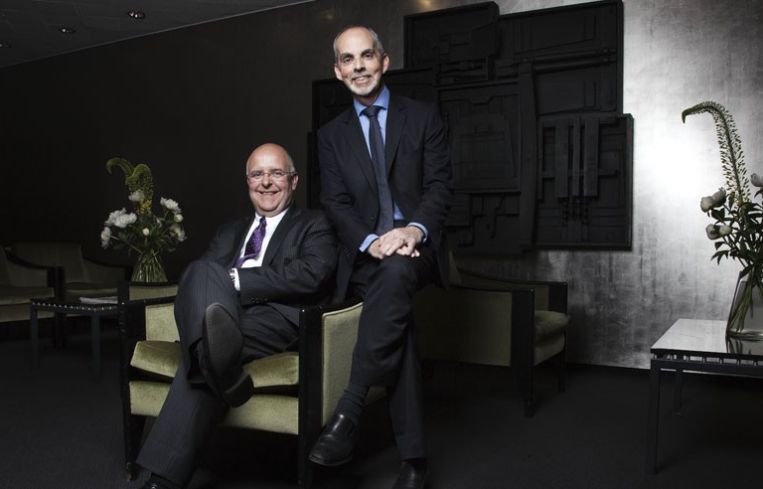The Lawyers at the Forefront of Stroock & Stroock’s Real Estate Explosion
By Danielle Schlanger June 24, 2015 10:14 am
reprints
Ross F. Moskowitz, a partner at national law firm Stroock & Stroock & Lavan who focuses on real estate development, gives out a copy of his favorite book, The Power Broker by Robert Caro, to each new associate when he or she starts.
“[I] think it captures the essence of New York real estate—planning, politics, location and finance,” said Mr. Moskowitz, who has been at Stroock since 1987 (minus a quick stint at the EDC in the 1990s).
Mr. Moskowitz should consider ordering more copies of Mr. Caro’s classic, because Stroock is in the middle of a growth spurt. Last month, the firm, which has offices in New York, Washington, D.C., Los Angeles and Miami, announced that eight attorneys from competitor DLA Piper would join the firm’s national Real Estate Practice Group (all told, Stroock has had 23 attorneys join the company in the past six months).
In the legal world, Stroock is very much an anomaly. It is close to 140 years old, but with approximately 300 attorneys, is still only mid-sized. It has eschewed the mergers that have devoured similarly sized firms. In contrast, DLA Piper was formed in 2005 as a result of a merger between three law firms and is one of the world’s largest, with thousands of lawyers on staff throughout North and South America, Asia, Europe and the Middle East.
Yet despite its relatively modest size, and commitment to retaining its ethos, Stroock has been involved in many real estate deals critical to the lifeblood of the city. Mr. Moskowitz worked on the team that negotiated with the city to lease and construct the new facility for the USTA in Flushing Meadows Corona Park. He also worked on Citifield (“Being a life-long Mets fan, having the opportunity to work for the team on their brand new stadium was a dream come true,” he said), the Alexandria Center for Life Sciences along the medical corridor between NYU Hospital and Bellevue and the Kingsbridge National Ice Center.
Building off of the firm’s momentum, and the success of the relatively new Washington, D.C., office, Stroock began exploring how it could expand.
“We started then looking at are our core practice groups,” said Mr. Moskowitz, who earlier this year Commercial Observer highlighted as one of New York’s most powerful real estate attorneys. Stroock’s real estate practice was already established at all of its offices, making it a “natural transition” to foster growth.
Stroock had a relationship with Jeffrey R. Keitelman, then at DLA Piper in Washington, D.C., from working across the table from him. At DLA Piper, Mr. Keitelman had been the head of the government real estate practice, the corporate real estate practice, the green real estate practice and a partner in the real estate group. All told, Mr. Keitelman had worked with the same group for the past 29 years.
“[Mr. Keitelman] started to tell us more about his group, and we started to feel like there was a connection,” said Mr. Moskowitz of Mr. Keitelman.
Though he was not initially looking to move, Mr. Keitelman began reflecting on the past 11 years of his career spent commuting on the Acela to and from New York City, where he represented the Port Authority of New York and New Jersey in connection with numerous projects at the World Trade Center site in New York.
“It was just time to become more human,” said Mr. Keitelman. Of DLA Piper, he said, “With scale comes sort of a distancing among people. That was my kind of major personal impetus.”
Though the World Trade Center project may have had the most name recognition, Mr. Keitelman worked on countless large real estate transactions over the course of his career. He represented Columbia Property Trust, one of the nation’s largest office Real Estate Investment Trusts, in major lease and real estate transactions and Alony Hetz, an Israeli company traded on the Tel Aviv Stock Exchange, in establishing a U.S. joint venture with JP Morgan Special Situations Fund and others with respect to Carr Properties, a Washington, D.C.-based real estate operating company. He has worked with Pfizer, Morgan Stanley, Beacon Capital Partners and Cisco Systems, among other corporations.
“I love to build things—that’s been my passion from when I was a little kid,” said Mr. Keitelman, who noted he did not know he was going to be a real estate lawyer when he arrived as a first-year at Columbia Law School. However, he was ultimately drawn to the field.
“I didn’t love many of my law school classes. What I did love was solving problems, negotiating, drafting, and being with people,” said Mr. Keitelman. “In my third year I was able to take a real estate finance and business course, having very little to do with law. I loved it. In fact, real estate seemed to be the least like law of anything I could practice—so that was it.”
Ultimately, Mr. Keitelman made the jump to Stroock, where he is now the co-managing partner of the Washington, D.C., office and co-chair of Stroock’s national Real Estate Practice Group. Mr. Keitelman also brought with him seven of his colleagues.
“Jeff wanted to find a home… for as many people as they could bring,” said Mr. Moskowitz. “He made it very clear and candidly, we looked at that as an opportunity as well.”

Another attorney that came with Mr. Keitelman is Marc Hurel, formerly a partner at DLA Piper and now based out of Stroock’s New York office. Since he began practicing law in 1984, Mr. Hurel has worked on a number of high-profile projects. He has worked for The New York Times on and off since 1987, including the development, financing and leasing of The New York Times’ building near Times Square. Recently, he also worked on the sale-leaseback of Verizon’s Basking Ridge, N.J., operations center. He also worked on the leasing of 11 Madison Avenue in Midtown South, which added value to what would turn out to be an extremely valuable building—CIM Group sold it to SL Green Realty Corp. last month for a staggering $2.6 billion.
Mr. Hurel, who had been at DLA Piper for roughly 11 years, had begun his law career doing real estate syndication work (tax sheltered investment partnerships in real estate). But over time he switched gears slightly within the real estate niche.
“When that industry was phased out by changes in the tax laws in the late 1980s and I was faced with finding something different to do, I realized that what I liked best about what I had been doing was not the corporate or tax aspects but the real estate itself, the chance to actually see the product of your work rising out of the ground,” said Mr. Hurel.
When Mr. Keitelman floated the idea of moving to Stroock, Mr. Hurel was intrigued.
“[Stroock is] a firm that I always thought about in the back of my mind as unique because they’ve stayed relatively small, and they’ve resisted urges to grow leaps and bounds or merge with other firms, which has been the hallmark of law firms in the past two decades,” he said.
Mr. Moskowitz stressed that Stroock is looking to evolve in areas where the firm is already strong.
“We don’t do everything, and that’s O.K.,” said Mr. Moskowitz. “But what we do, we do particularly well.”
There is a “method to the madness,” Mr. Moskowitz added.
“Whether picking out a restaurant and neighborhood or trying to figure out where someone lives, everything revolves around the real estate of New York City,” said Mr. Moskowitz. “I can feel and touch my projects and from the beginning of my career. I love getting to know the neighborhood of the project [and] understanding the vibe and pulse of the area.”



